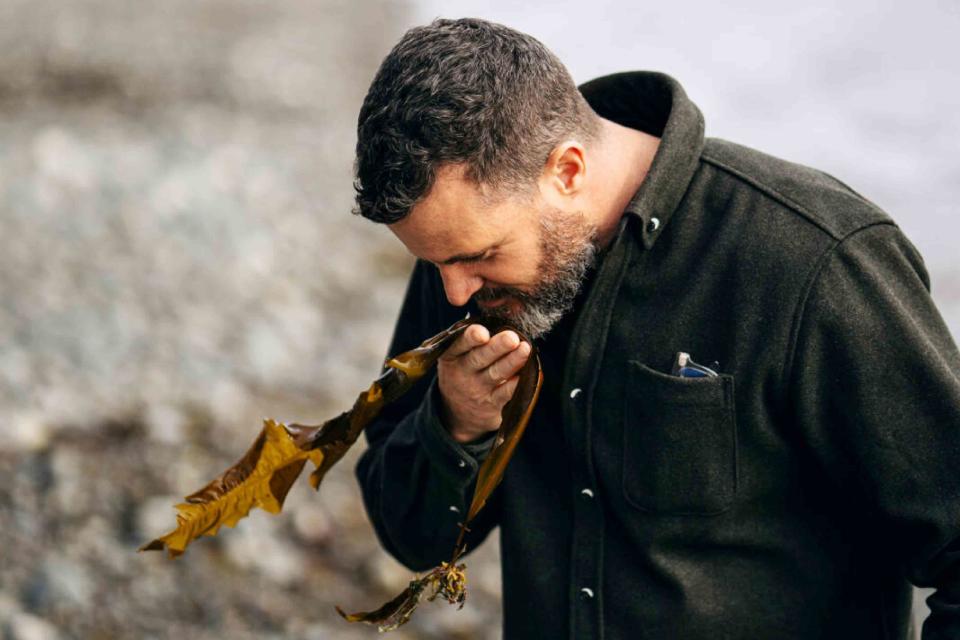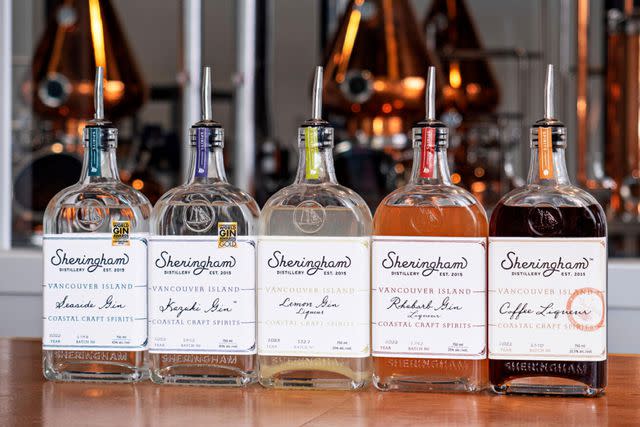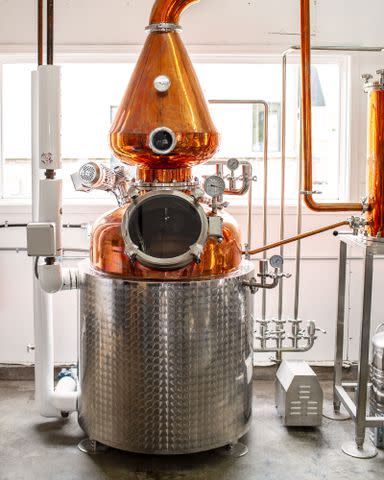These Gins Taste Just Like Canada
Canada's coolest gin distillers are using hyper-local ingredients to bottle a taste of the nation.

Jon-Mark Photography
Cofounder of Sheringham Distillery Jason MacIsaacWhat if you could bottle a moment, when the scenery, the climate, and the company were just right? The cofounders of Sheringham Distillery, Jason and Alayne MacIsaac, did just that.
As Jason meandered down a wild, misty beach on Vancouver Island, a rugged outpost off Canada’s Pacific coast, he found himself inspired. “Nootka roses were blossoming on the path, and the sweet sea breeze surrounded us,” he says. “It was such a special feeling, a true sensation of the West Coast. I wondered — could we express it through a gin?”
He recruited Amanda Swinimer, a forager who dives for seaweed in the chilly ocean waters, and started running varieties of local seaweed through his still, in his first attempt to bottle a small taste of the terroir. “We found winged kelp adds this magical bit of brininess and oceanic texture to a gin,” says Jason. In a martini, it tastes like a seaside breeze.
The MacIsaacs’ other spirits are on a similar quest to capture British Columbia’s energy. Their Raincoast Gin channels ancient redwoods in a rainstorm through a botanical mix of oakmoss, nettles, and cedar leaf. Cherry blossom–based Beacon Gin is a liquid nod to spring in Victoria, when blush-hued blooms blanket the city.
Why does gin give such a vivid expression of place? Because makers can project a cast of local ingredients onto it, such as those foraged by the MacIsaacs and their team. As you move across the Canadian provinces, gins shape-shift to match their surroundings. And you’ll find plenty of other gin makers bottling their region’s essence.

Ryan Landa
A selection of their distinctive ginsIn the prairies, nautical botanicals swap out for things grown on the plains. Black Fox Farm and Distillery uses mustard seed, grown in abundance in Saskatchewan, to make a golden-hued, sweet, savory, and slightly tangy gin.
Eau Claire Distillery conjures the frontier past of Alberta’s Cowboy Trail. During Prohibition, bootleggers hid moonshine in the hills; the current distillery building then housed several speakeasies and a brothel. While gin is now legal, distiller Caitlin Quinn still uses prairie ingredients like Saskatoon berries (more closely related to apples) and sour cherries—plants that freckle the barren landscape and can survive the plains’ dry terrain.

Henhouse Photo Co.
The distilleryâs gin stillIn the eastern reaches of the country, spruce tips are the star. Jill Linquist, the owner of Nova Scotia’s Raging Crow Distillery, saw a recipe for a spruce-tip simple syrup in a book and looked outside—the woods around her property are surrounded by evergreen trees. “It tweaked something within me. Those flavor profiles make so much sense for gin.” So now she drives around her area, pulling the bright green tips off spruce branches and letting their citrusy flavors shine in spirit form. In the wintertime, she’ll use maple syrup from trees seven minutes down the road to make a maple vodka, or local haskap berries to make a pink gin.
These gins don’t taste anything alike, each drop serving a bottled snapshot of Canada from coast to coast. Sheringham’s gins feel wind-slicked and wild; Raging Crow’s remind you of eating lobster rolls on a rocky maritime outcrop. They’re spirits that sip with specificity and terroir—far better souvenirs than your standard postcard.
For more Food & Wine news, make sure to sign up for our newsletter!
Read the original article on Food & Wine.

